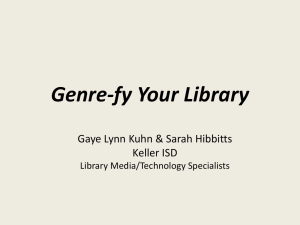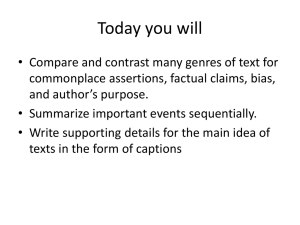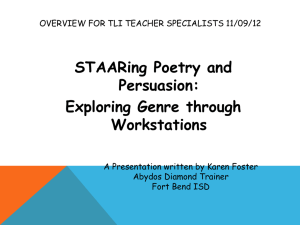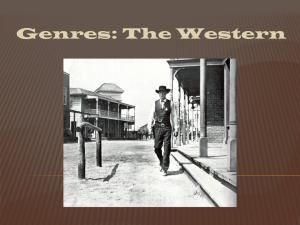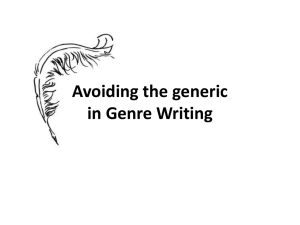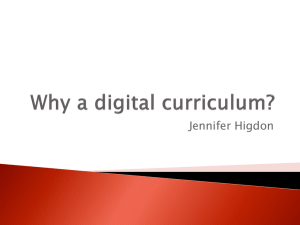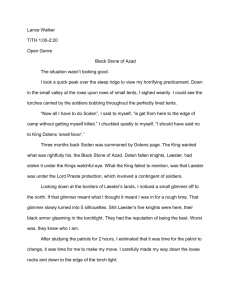Supporting Writing in the English Classroom 4 File
advertisement
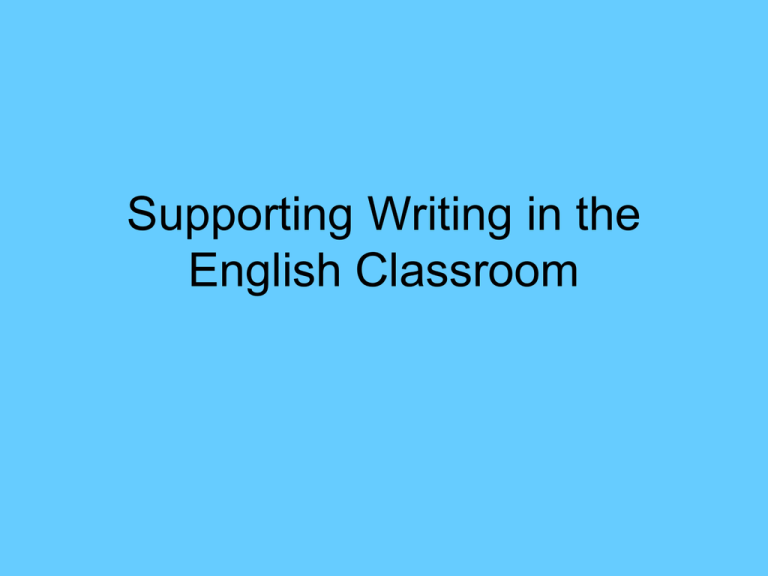
Supporting Writing in the English Classroom Supporting Writing in the English Classroom • Aims To consider what is involved in the writing process To explore contrasting approaches to the teaching of writing To consider strengths and limitations of different classroom strategies • Objectives Understand the different models proposed for teaching of writing Be able to use a range of strategies in the English classroom to support students’ writing Supporting Writing in the English Classroom • • • • • • The range of writing in English What happens when we write Approaches to writing: Process and Genre A model for teaching writing Shared/modelled writing Other strategies to scaffold writing The range of writing in English Compile a quick chart of the writing you have done/seen in English classrooms: Audience Purpose Form Story Starters • • • • • • • • • Dark clouds scudded across the moon as a small girl hurried anxiously along the path. Her footsteps seemed to echo in the shadows. Suddenly she stopped…. listened…. Rosie tossed her auburn hair restlessly and gazed out of the window. Why hadn’t Roger returned her call? Maybe Jackie was right to warn her that he was a bit of a wolf… Monday: Granny started going dead weird on me. She’s got this terrible moustache. So embarrassing! What on earth will Sophie say if she calls round? And she keeps wanting me to snuggle up close to her…. “Oh come on you lot, don’t be so jolly boring! I vote that we take a short cut through the woods,” urged Peter. “Sammy would love a good run….” Once, not twice, but once upon a time, in the land where East meets West and North meets South, which is nowhere, everywhere and here, there lived a foxy gentleman…. Werewolves are only found in kids’ tales. Ruth reminded herself of this fact, not for the first time, as she made her way down the dark alleyway. But she could still hear the soft patter of feet behind her, and in her mind last night’s dream lingered…. Identify the genre of each story Choose one version and carry on for two more sentences What skills and knowledge did you need to draw on in order to complete the task? What writers do • • • • • • • • • Motor control Spelling Punctuation Grammar Knowledge of genre Prior reading Other prior experience Motivation Having something to say Two contrasting approaches to the teaching of writing • The Process Approach (Graves (1983) Writing: Teachers and Children at Work) • • • • • • • • Children immersed in stories and other types of text High levels of student choice about writing topics Focus on autobiographical and narrative writing Writing journals Writing workshops/writing conferences Mini-lessons to focus on technical aspects Publishing writing for real audiences Children as authors Two contrasting approaches to the teaching of writing • The Genre Approach (work of Cope, Kalantzis, Martin – e.g. Cope and Kalantzis (1993) The Powers of Literacy: A Genre Approach to Writing) • All texts we write can be categorised into a genre, or text type • Reading and analysing an example text from any given genre can uncover its conventional features (at word, sentence and text level) • Through a process of identifying concentions, teacher modelling and shared writing, students master the conventions of the text type • Students can then reproduce in their own independent writing the particular text type Two contrasting approaches to the teaching of writing • Criticisms of the Process Approach • Isn’t direct teaching of writing – children expected to learn through a process of ‘osmosis’ • Fails to support the less literate children in the classroom • Amounts to teaching by correction • Narrows the range of writing that children undertake Two contrasting approaches to the teaching of writing • Criticisms of the Genre Approach • Constrains individual choice and freedom • Over rigid in its definitions of text types (not applicable to the real world) • Limits motivation/purpose • Over corrective • Reinforces textual power • Over extension of limited initial project The Literacy Strategy and The Genre Approach to Writing • The Literacy Strategy strongly adopted the genre model for writing, naming six categories of non-fiction text: • • • • • • Information Recount Explanation Instructions Persuasion Discursive writing A Model for Teaching Writing • Read a shared example of a text • • Look at key features of the text Model an example of this type of writing • • Shared composition Scaffold independent writing • • Independent writing Review/evaluation • Redrafting Modelling Writing – Key Principles • Focus on a particular area – opening paragraph, concluding statement, significant description, moment of action • Keep it short • Offer alternatives • Think aloud, talk about choices, decisions, and their consequences • Articulate the difficulties • Make mistakes, cross out, start again Shared Writing- Key Principles • Take as many ideas as possible • Try to synthesise suggestions from various sources • Reject unhelpful suggestions positively • Invite redrafting as you go along Scaffolding Independent Writing • • • • • • • Annotated examples Assessed examples Conventions Modelling writing Shared writing Writing Frames Pre-writing activities Benefits of Writing Frames • Cures the ‘I don’t know how to start….’ syndrome • Offers a structure and overview • Gives appropriate connectives to aid cohesion • Helps students to write successfully • Useful for differentiation • • • • • Dangers Limiting creativity Encouraging dependency Setting frames in stone Overuse Pre writing activity – Fire of London • Prioritising • Categorising Why did the fire of London got out of control and destroy so much of London? – Essay Structures • Prioritising/Zone of Relevance The most crucial factor in answering this question is…. A second important factor is….. Somewhat less vital, but still relevant to the question, is …. • Categorising/Grouping A number of factors relating to town planning played a big part in the spread of the fire… Also important in terms of the extent of the devastation are factors relating to weather…. A number of long-term causes could help to answer this question. Firstly….. Another crucial long term factor ….. In addition some short term issues contributed to the fire’s effects…. Pre-writing Activities • Dealing with a range of information to be used in an extended piece of writing • Sorting and categorising information • Zone of relevance, short/long term, relative importance, for/against • Helps to organise content • Offers a shape/structure to writing, and allows students to see this before writing • Can allow students to construct own writing frames • Can point to areas for further research/evidence • Encourages talk/debate/justifying ideas • Appeals to kinaesthetic learning styles Applications in English • In addition to non-fiction/discursive/persuasive writing, this technique enhances work prior to typical lit-crit essays, e.g.: • • • • Who is most responsible for the murder of King Duncan? IS it true to say that Macbeth is a good man corrupted by outside influences? What do yo consider to be the key themes of Of Mice and Men How far is it true to say that Othello and Roderigo are simply puppets in Iago’s games? In the Crucible, why did the witchcraft trials get out of ocntrol and cause the death of so many citizens? • • Typical process: – – – – A range of statements given to students in relation to question Students sort information in a variety of appropriate ways Students come up with linking ‘topic sentences’ to introduce each statement as a paragraph Students find quotations or other evidence to back up statements and support opinions DCFS (2008) Getting Going: generating, shaping and developing ideas in writing www.teachernet.gov.uk/publications • • • • • • • • • Students’ own interests Audience Using shared texts Drama Sentence games Modelling ICT Organising information/planning activities Class display




